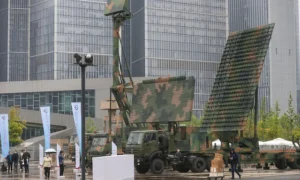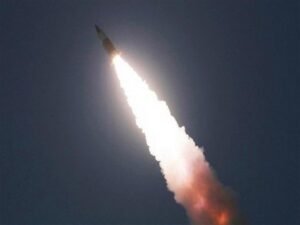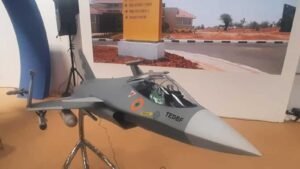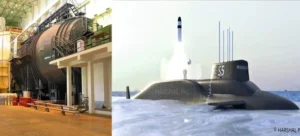One of the biggest geopolitical decisions may be taken on the sidelines of the G-20 summit held in Delhi. That decision is on a possible infrastructure – a deal involving railways and ports signed by India, the United States, the United Arab Emirates, and Saudi Arabia.
ATACMS Stealth Launch Capability Could Erode RuAF’s Air Dominance; Emerge Game Changer Unlike Storm Shadow
Though the blueprint of the deal through a MoU is not exactly known at the time of writing, it will link India (South Asia) with the Middle Eastern countries through railways and ports in the first phase.
The idea of this proposed big trade route is that from Indian ports, commodities could be shipped to the UAE and, from there, with the rails to Saudi Arabia and Israel. From their ports, Europe, particularly Greece, could be reached again by ships.
Though Israel and Greece (Narendra Modi has just concluded an official visit to Greece, the first time ever by an Indian Prime Minister in 40 years) have been sounded about this deal, and there has been a positive response from them, leaders of the rest four –Modi, US President Joe Biden, UAE President Mohammed bin Zayed and Saudi Arabia’s Crown Prince Mohammed bin Salman are all present in Delhi.
A memorandum of understanding would be inked to “explore shipping and rail transportation that will enable the flow of commerce, energy, and data from here in India across the Middle East to Europe,” according to Jon Finer, US Deputy National Security Advisor.
“First, it is not just the Railway project; it is the shipping and Railway project, and it is important for people to understand how expansive, ambitious, and ground-breaking this will be,” he had told the media covering Biden’s entourage to India on Saturday. “[The corridor] will enable the flow of commerce, energy, and data from here in India across the Middle East to Europe.”
In fact, it is being projected to be “a green and digital bridge across continents and civilizations” ultimately.
Diplomatic sources say that this idea has not come all of a sudden, and senior officials of the four countries have been working on it for months. While things were smooth during the preparatory talks among the Indian, American, UAE, and Israeli officials, the big challenge was to make Saudi Arabia agree to it, it is said.
As it is, “the I2U2”, comprising India, Israel, the US, and the UAE, has been pegged as “the Middle-Eastern Quad” by some observers with a focus on countering Chinese influence. So, agreement among them about the proposed MoU was never an issue.
However, the same has not been the case with Saudi Arabia. For one, things have not been that cordial between Biden and the Saudi crown prince at a personal level. For another, Saudi Arabia has good relations with China, which brokered an agreement not long ago between Riyadh and Teheran.
And here, India’s National Security Adviser Ajit Doval is said to have played a great role. In recent months, he repeatedly met bilaterally and at multilateral events with his counterparts – Jake Sullivan of the US, Sheikh Tahnoon bin Zayed Al Nahyan of the UAE, and Musaid Al Aiban of Saudi Arabia.
He had also talked to the Saudi crown prince during his visit to Saudi Arabia in May to impress upon the idea of having “a shared vision of a more secure and prosperous Middle East region interconnected with India and the world.”
It may be noted here that on July 14, 2022, the Heads of Government of India, Israel, the United Arab Emirates (UAE), and the United States convened for the first leaders’ meeting of the “I2U2” Group virtually. They had made it clear that they would aim at harnessing “the vibrancy of our societies and entrepreneurial spirit to tackle some of the greatest challenges confronting our world, with a particular focus on joint investments and new initiatives in water, energy, transportation, space, health, and food security.” Thus, “Transport” was thus an important goal.
Subsequently, US NSA Sullivan had made it clear in a speech at the Washington Institute for Near East Policy: “If you remember nothing else from my speech, remember I2U2, because you will be hearing more about it as we go forward”.
Sullivan had added that the fundamental notion was to connect South Asia to the Middle East to the US “in ways that advance our economic technology and diplomacy.”
According to him, “A more integrated, interconnected Middle East empowers our allies and partners, advances regional peace and prosperity, and reduces the resource demands on the US in this region over the long term without sacrificing our fundamental interests or our involvement in the region.”
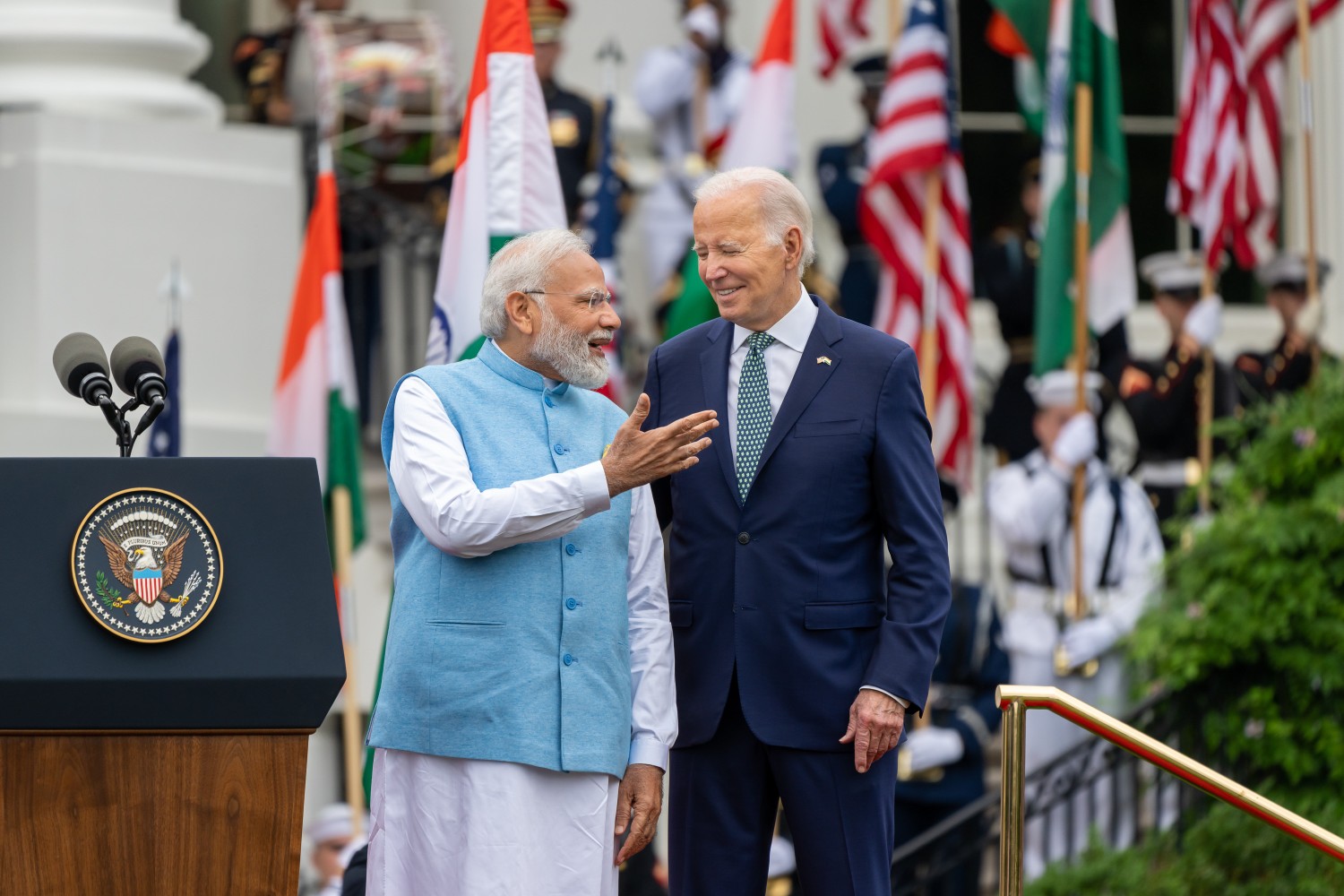
Similarly, in July, Israeli Prime Minister Benjamin Netanyahu was reported to have stated that a planned railway connecting Kiryat Shmona in northern Israel to Eilat in the south could eventually allow Israel to connect by train to Saudi Arabia and the Arabian Peninsula. Such an infrastructure deal could reduce shipping times, cost, and the use of diesel and make trade faster and cheaper, Israeli officials had also indicated.
India’s partnership in this project, it is said, will help the country achieve better connectivity and cheaper transport costs with a region where a large number of Indian immigrants go to work and from where India usually imports most of its oil. It will also boost India’s reputation as a global builder of infrastructure because India wants to build a global image as highly competent in constructing railway routes.
Significantly, when Saudi Crown Prince Mohammed bin Salman who arrived in the Indian capital yesterday, he was received at the airport by India’s Railways Minister Ashwini Vaishnaw.
This was in sharp contrast to the cases with other heads of state and government attending the G-20 summit; each of them, including President Biden, was received by the Indian “ministers of state.” But Vaishnaw is a senior minister of the cabinet rank in Modi’s council of ministers.
#WATCH | G 20 in India: Handshake by Prime Minister Narendra Modi, US President Joe Biden and Crown Prince of Saudi Arabia Muhammed Bin Salman, at PGII & India Middle East Europe connectivity corridor launch event, in Delhi pic.twitter.com/YgW22tbcpw
— ANI (@ANI) September 9, 2023
Of course, it could be argued that, unlike other dignitaries, the Crown Prince is also on a formal state visit to India. He will hold official talks on bilateral issuers on September 11.
What is equally significant is that it is a stand-alone visit to India; he had canceled his earlier plan to stop in Pakistan on his way to India, speculated to be at India’s request.
That signifies the strengthening of ties between Riyadh and Delhi under Modi’s leadership, despite systematic attempts by critics to denigrate the latter as anti-Muslim.
The proposed deal has two major geopolitical implications. One is that if it gains priority by the “I2U2” and Saudi Arabia, it is bad news for the future of the alternate route of the International North-South Transport Corridor (INSTC), a multimodal transportation network connecting India and the Persian Gulf to Russia and Northern Europe.
As it is, following the imposition of sanctions on both Iran and Russia, two of the most important beneficiaries of this project are finding it difficult to implement the scheme by building the necessary infrastructures to complete the project.
The INSTC is a 7200 km-long project from India and Iran to Russia. When completed, it will be the shortest trade route connecting India with Russia and 30 percent cheaper and 40 percent shorter than the traditional Suez route, reducing transit time to an average of 23 days for Europe-bound shipments from the traditional 45-60 days.
The INSTC is a multi-modal network of ships, rail, and roads for moving freight that India, Russia, and Iran approved at the Euro-Asian Conference on Transport in St. Petersburg on September 12, 2000. Other members included Turkey, Oman, Syria, Belarus, and Ukraine; the Central Asian nations of Tajikistan, Kyrgyzstan, and Kazakhstan; and Caucasus nations Armenia and Azerbaijan.
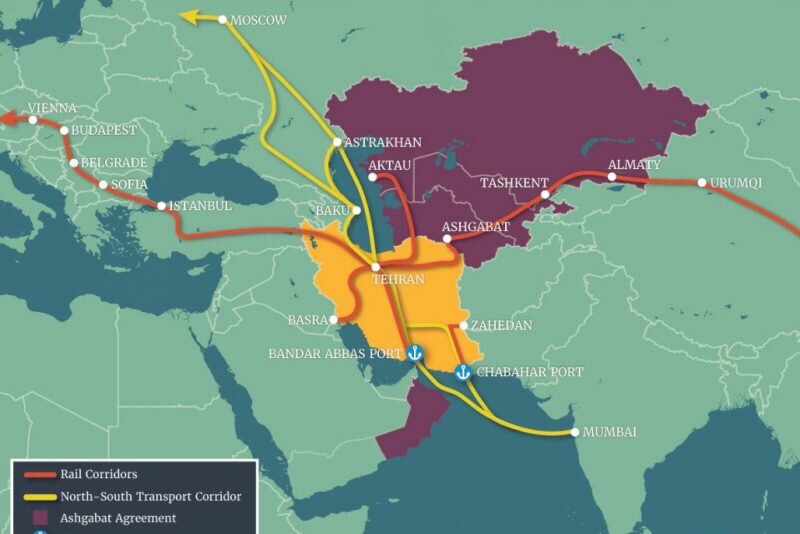
The second geopolitical implication is that the India-Middle East transport corridor is an alternate plan to Chinese President Xi Jinping’s highly ambitious Belt and Road Initiative (BRI). Both India and the US have rejected this BRI.
In fact, if their plan succeeds, it will serve as a counter to China’s BRI, which has left a host of developing countries in deep debt. In contrast, to make the proposed India-Middle East transport corridor succeed, President Biden has indicated that the US would be happy to be an alternative partner and investor in this part of the world that would connect his Indo-Pacific and trans-Atlantic strategies.
It would also facilitate Biden’s broader diplomatic deal in the Middle East that would have Saudi Arabia recognize Israel and support the Abraham Accords, resulting in reconciliation among the UAE, Bahrain, and Israel.
- Author and veteran journalist Prakash Nanda is Chairman of the Editorial Board – EurAsian Times and has been commenting on politics, foreign policy, and strategic affairs for nearly three decades. A former National Fellow of the Indian Council for Historical Research and recipient of the Seoul Peace Prize Scholarship, he is also a Distinguished Fellow at the Institute of Peace and Conflict Studies.
- CONTACT: prakash.nanda (at) hotmail.com
- Follow EurAsian Times on Google News
Source link
#India #Devise #Alternate #Plan #Chinas #MultiBillion #BRI #Project #Involving #UAE #Saudi #Arabia


